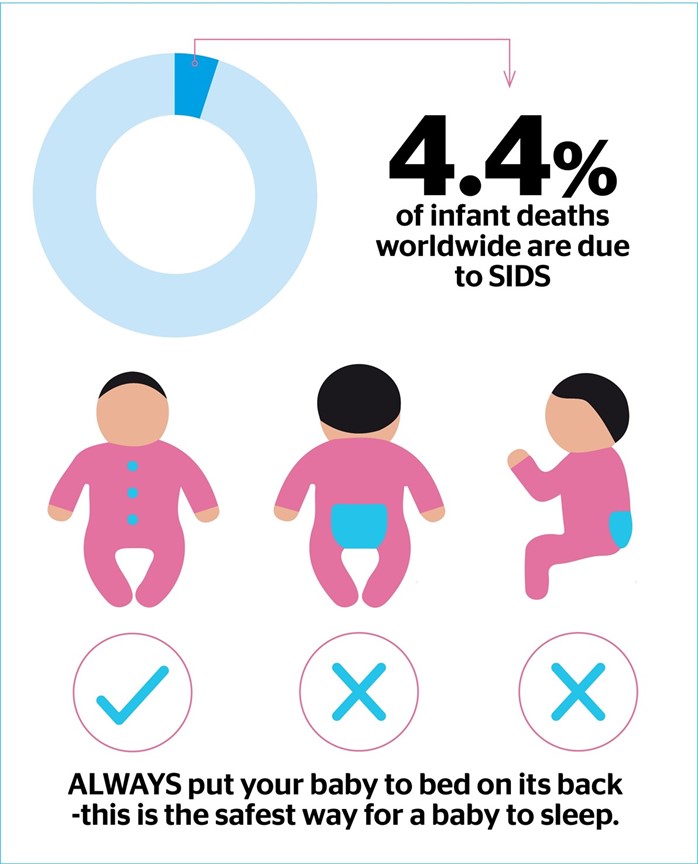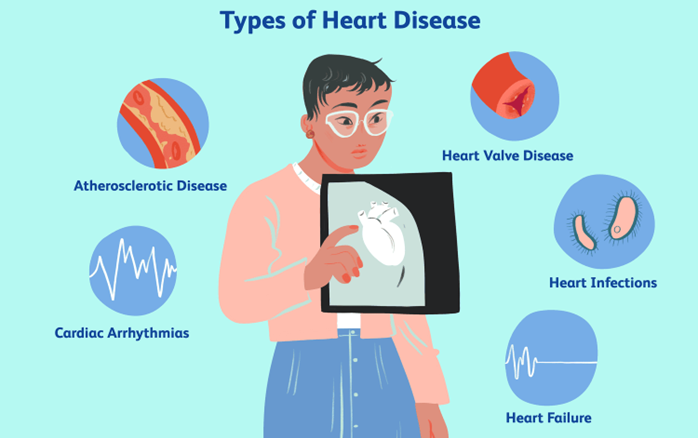Which factors are the main causes of the high infant mortality rate? Select all that apply.
Cardiac complications
Necrotizing enterocolitis
Viral infections
Prematurity
Sudden infant death syndrome
Low birth weight
Correct Answer : B,D,E,F
Choice A: Cardiac complications are not the correct answer because they are not the main cause of the high infant mortality rate. Cardiac complications are problems that affect the heart or blood vessels of the newborn, such as congenital heart defects, arrhythmias, or heart failure. They can cause serious symptoms such as cyanosis, difficulty breathing, or poor feeding. However, they account for only about 5% of all infant deaths in the United States.
Choice B: Necrotizing enterocolitis is the correct answer because it is the main cause of the high infant mortality rate. Necrotizing enterocolitis is a condition that causes inflammation and death of the intestinal tissue of the newborn, leading to infection, perforation, or sepsis. It can cause symptoms such as abdominal distension, bloody stools, or shock. It is more common in premature or low birth weight infants and accounts for about 10% of all neonatal deaths.
Choice C: Viral infections are not the correct answer because they are not the main cause of the high infant mortality rate. Viral infections are diseases that are caused by viruses that invade the cells of the newborn, such as respiratory syncytial virus (RSV), cytomegalovirus (CMV), or herpes simplex virus (HSV). They can cause symptoms such as fever, cough, rash, or blisters. However, they account for only about 2% of all infant deaths in the United States.
Choice D: Prematurity is the correct answer because it is the main cause of the high infant mortality rate. Prematurity is a condition that occurs when a baby is born before 37 weeks of gestation, which is considered full-term. Premature babies are at risk of developing various complications such as respiratory distress syndrome, intraventricular hemorrhage, or retinopathy of prematurity. Prematurity accounts for about 35% of all infant deaths in the United States.
Choice E: Sudden infant death syndrome is the correct answer because it is the main cause of the high infant mortality rate. Sudden infant death syndrome is a condition that causes the unexpected and unexplained death of an apparently healthy baby during sleep. The exact cause of sudden infant death syndrome is unknown, but some risk factors include sleeping on the stomach, overheating, smoking exposure, or soft bedding. Sudden infant death syndrome accounts for about 15% of all infant deaths in the United States.
Choice F: Low birth weight is the correct answer because it is the main cause of the high infant mortality rate. Low birth weight is a condition that occurs when a baby is born weighing less than 2,500 grams (5 pounds 8 ounces). Low birth weight babies are at risk of developing various complications such as hypothermia, hypoglycemia, or jaundice. Low birth weight accounts for about 25% of all infant deaths in the United States.

Nursing Test Bank
Naxlex Comprehensive Predictor Exams
Related Questions
Correct Answer is B
Explanation
Choice A: Cancer is not the correct answer because it is not the leading cause of death among women. According to the World Health Organization, cancer accounted for 15% of all deaths among women in 2019.
Choice B: Heart Disease is the correct answer because it is the leading cause of death among women worldwide. According to the World Health Organization, heart disease accounted for 21% of all deaths among women in 2019. Many women are unaware of the risk factors and symptoms of heart disease, and may not seek timely medical attention. Therefore, educational programs that raise awareness and promote the prevention of heart disease are a priority for women's health.
Choice C: Diabetes is not the correct answer because it is not the leading cause of death among women. According to the World Health Organization, diabetes accounted for 4% of all deaths among women in 2019. However, diabetes can increase the risk of developing other complications such as heart disease, kidney disease, and blindness. Therefore, educational programs that teach women how to manage their blood sugar levels and prevent complications are important for women's health.
Choice D: Smoking is not the correct answer because it is not a condition, but a risk factor for many diseases. Smoking can increase the risk of developing lung cancer, heart disease, stroke, and chronic obstructive pulmonary disease. Therefore, educational programs that help women quit smoking and avoid exposure to secondhand smoke are beneficial for women's health.

Correct Answer is ["A","C","E"]
Explanation
Choice A: Sleep disturbances are the correct answer because they are a symptom of a heart attack observed in women. Sleep disturbances are problems that affect the quality or quantity of sleep, such as insomnia, nightmares, or snoring. They can indicate that the heart is not pumping enough blood and oxygen to meet the body's needs during sleep. About 48% of women who have had a heart attack report having sleep disturbances in the weeks before their event.
Choice B: Syncope is not the correct answer because it is not a symptom of a heart attack observed in women. Syncope is a condition that causes a temporary loss of consciousness due to a drop in blood pressure or blood flow to the brain. It can be caused by various factors such as dehydration, medication side effects, or cardiac arrhythmias. However, it is not a common sign of a heart attack in women and only about 12% of women who have had a heart attack report having syncope before their event.
Choice C: Unusual fatigue is the correct answer because it is a symptom of a heart attack observed in women. Unusual fatigue is a feeling of extreme tiredness or exhaustion that is not relieved by rest or sleep. It can indicate that the heart is not pumping enough blood and oxygen to meet the body's needs during daily activities. About 70% of women who have had a heart attack report having unusual fatigue in the weeks before their event.
Choice D: Extreme hunger is not the correct answer because it is not a symptom of a heart attack observed in women. Extreme hunger is a feeling of intense or excessive appetite or craving for food. It can be caused by various factors such as diabetes, thyroid disorder, or stress. However, it is not a sign of a heart attack in women, and only about 4% of women who have had a heart attack report having extreme hunger before their event.
Choice E: Arm pain is the correct answer because it is a symptom of a heart attack observed in women. Arm pain is a feeling of discomfort or ache in one or both arms, especially the left arm. It can indicate that the heart muscle is not receiving enough blood and oxygen due to a blocked coronary artery. About 42% of women who have had a heart attack report having arm pain before their event.
Whether you are a student looking to ace your exams or a practicing nurse seeking to enhance your expertise , our nursing education contents will empower you with the confidence and competence to make a difference in the lives of patients and become a respected leader in the healthcare field.
Visit Naxlex, invest in your future and unlock endless possibilities with our unparalleled nursing education contents today
Report Wrong Answer on the Current Question
Do you disagree with the answer? If yes, what is your expected answer? Explain.
Kindly be descriptive with the issue you are facing.
